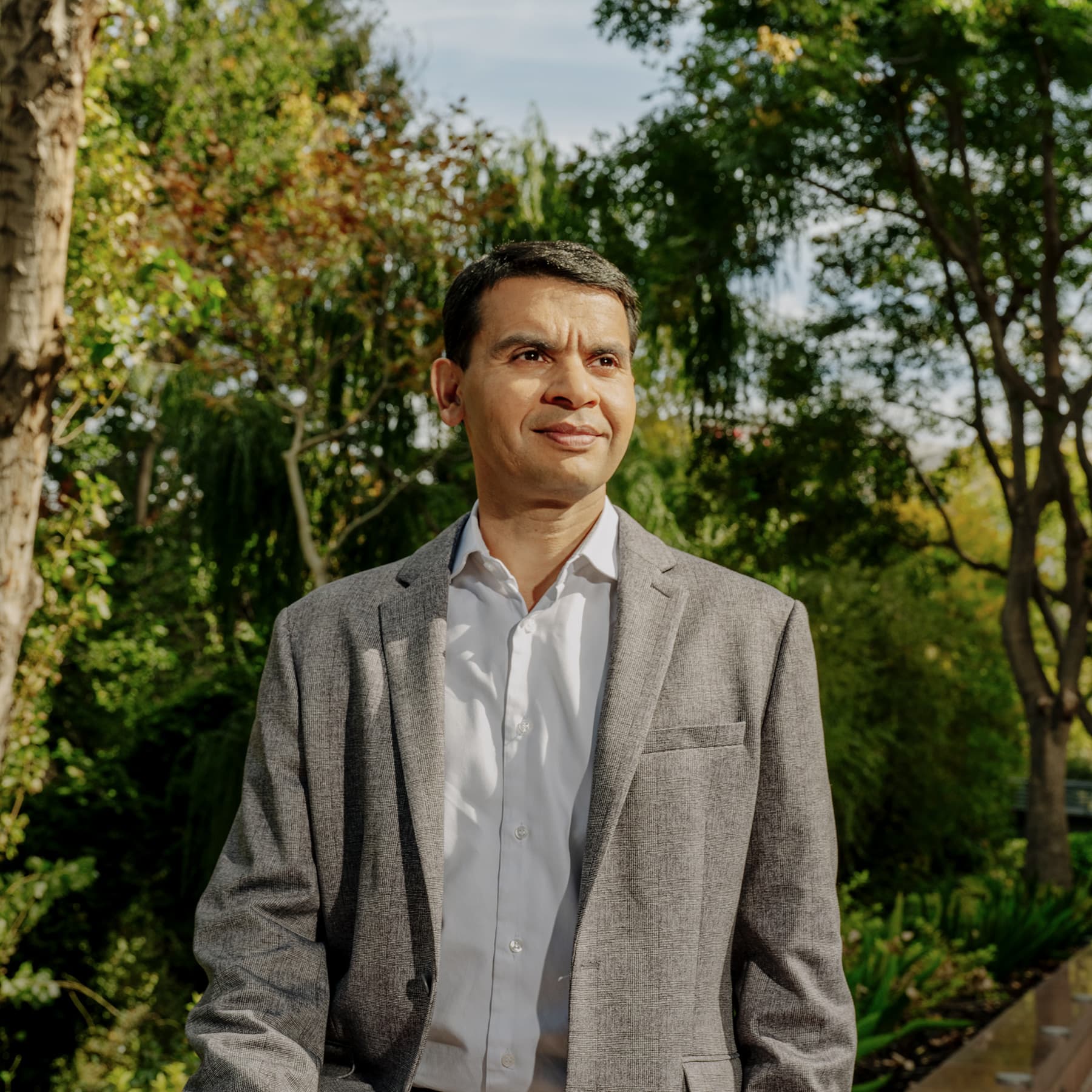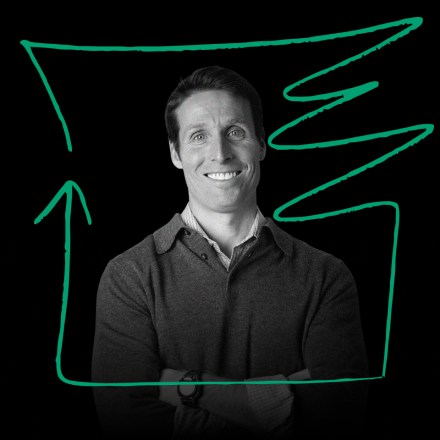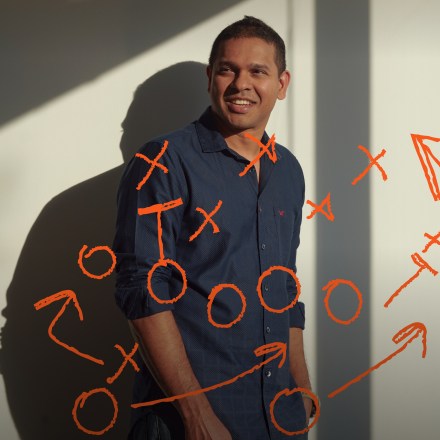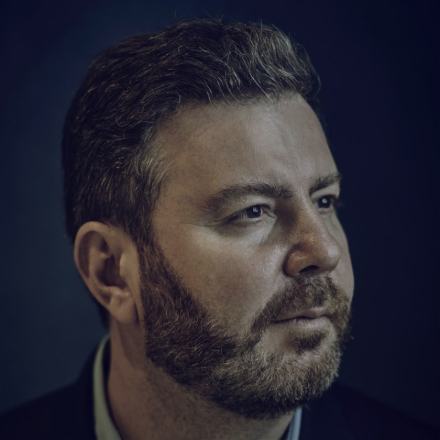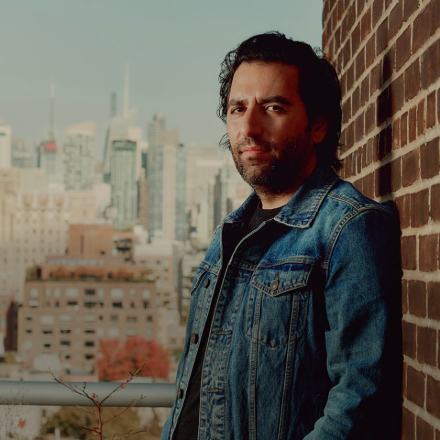Mohit Aron grew up in Chandigarh, India, a city built to prove something. There, he was surrounded by brick-and-mortar manifestations of order and simplicity, in a metropolis designed to show what could emerge from the chaos of the 1947 India–Pakistan partition, at least on the Indian side of the border.
Intended to replace the previous Punjab state capital of Lahore, which ended up in Pakistan after the partition, Chandigarh’s design was placed in the hands of outsiders—Europeans, mostly, led by Swiss-French architect Le Corbusier—in part to avoid symbols that might stoke sectarian violence. Le Corbusier created a gridded system of roads with green spaces in between and high-rises set aside for government officials’ residences. Upon its founding in 1953, Chandigarh symbolized a new, modernist future for India.
But by the time Aron was growing up, the city’s promise had been overshadowed by a population boom and shifting politics. Chaos had crept back in. During Aron’s adolescence in the 1980s, there was a string of terrorist attacks throughout Punjab, as many in the state called for secession from India. “The worst part was when I was in middle school, high school,” Aron remembers. “Once in a while, there would be a curfew, and there were killings on the streets, assassinations and bombings.”
Amid all this tension, Aron lived a relatively stable existence. He grew up with a strict father, Anil, a self-taught forest service officer who had little money after leaving the army and making his way to college. Anil wore his history in the way he presented himself, and if his son ever complained about waking up early or going to school, Anil made it clear that the security his son enjoyed was not guaranteed.
If you ask Aron today about those years, he says that growing up with constant reminders of his father’s modest upbringing and the political instability all around him had a silver lining: They helped him feel comfortable with uncertainty. “I really cannot predict for certain what’s going to happen in the future,” he learned. “All I can do is say, ‘Okay. I think this is what we can do, and here are the actions today that might lead to that outcome.’ That’s all we can do.”
It wasn’t just Chandigarh that helped forge this worldview. In small but meaningful ways, Aron’s parents always encouraged their son to face the unknown. “In that city, at that time, we barely knew computers,” he remembers. “We barely knew engineering. But we knew that there was the above and beyond. My parents were always pushing me to go above and beyond.”
“We barely knew computers. We barely knew engineering. But we knew that there was the above and beyond. My parents were always pushing me to go above and beyond.”
MOHIT ARON
Aron’s parents encouraged him to apply to graduate programs in the United States, and he eventually landed at Rice University in Houston for his PhD in Computer Science. At Rice, Aron learned that he didn’t just have to look for answers in the form of scientific theorems and methodologies that were already out there—he could also create new understanding, what he and his advisors called “generating knowledge.” Over and over, at Rice and in the years following his graduation, Aron felt comfortable starting with nothing, with disorder, with not knowing what, if anything, he’d find.
He remembers thinking a lot about Einstein in those days. Einstein knew that something was lacking in our understanding of the natural world. The Theory of Relativity was his attempt to explain the inner workings of the universe, to say, “Look at this chaos, it can’t really be chaos. Order can be mapped onto all of this.” This same way of thinking, thought Aron, could be applied just about anywhere—including, as he would soon learn, to the world of data engineering.
Aron’s younger brother, Anirudh, remembers the first time his older brother told the family he’d be leaving his job to start a company in 2009. “We were very skeptical,” he remembers. This was, perhaps, a natural response—after all, Aron had spent several successful years at Google and at Aster Data Systems, where he made a name for himself optimizing complex data management systems to go faster, to scale, and to always run smoothly. Despite their parents’ pushing them into unexplored territory when they were younger, the idea of fully letting go of a comfortable, successful career was unheard of in the Aron family. “We had always been attuned to the idea that you work, and you get a salary, and life goes on,” remembers Anirudh.
But Aron forged ahead, and as the technical co-founder of Nutanix, he pursued the idea of hyperconvergence between computing and storage through virtualization. To get around slow network speeds, Nutanix used software to improve the performance of storage devices. This was Aron’s way of cutting out the slow middleman.
Aron was the technical founder behind Nutanix, but he left after a few years. Aron, for his part, describes his departure as motivated by innovation. “I just saw a bigger opportunity to what Nutanix was doing,” he says. Plus, he wanted to step out of his role as a technical lead, and try his hand at being a CEO.
In April 2013, soon after leaving Nutanix, he would face a new kind of chaos: Aron’s mother underwent heart surgery. Suddenly, with his professional future wide open and an ailing parent in need of support, he decided he needed to be by his mother’s side. Arinduh remembers this as a time of deep reflection for his brother: “He would just be sitting in a chair and not doing anything.” With no screens, books, or other distractions, Aron had plenty of time to think. Whenever his brother was caring for their mother or she was resting, he was connecting the dots about how he would start his next company. A few months later, in June 2013, he founded Cohesity, the company that would change his life.
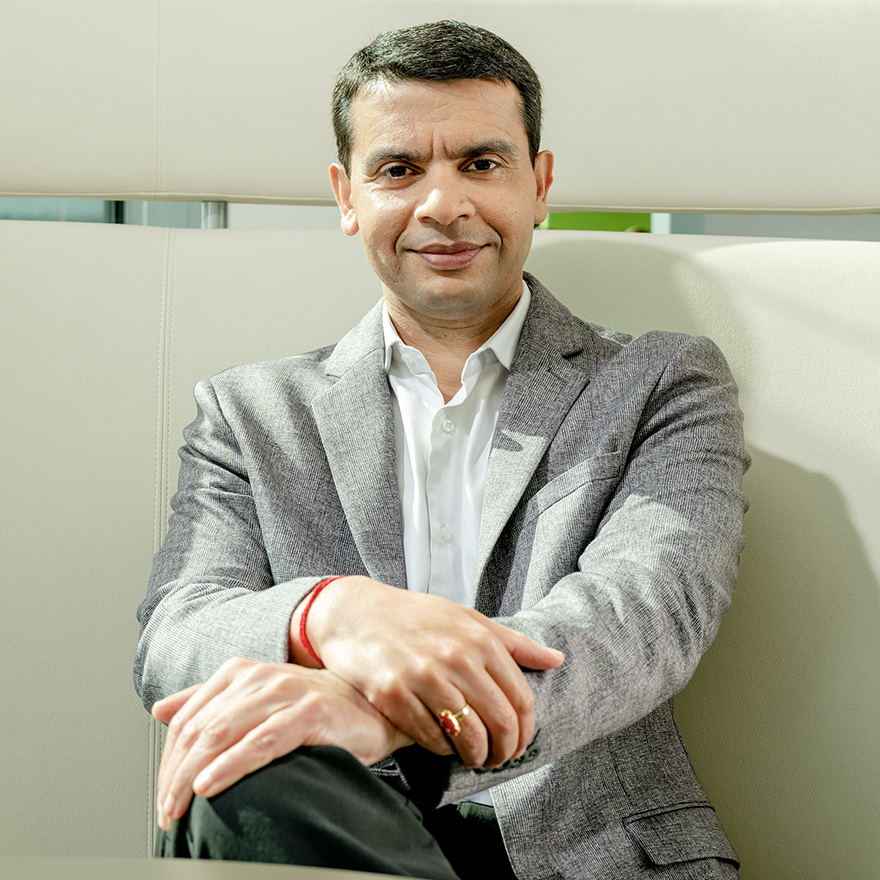
“I cannot predict for certain what’s going to happen in the future. All I can do is say, ‘I think this is what we can do, and here are the actions today that might lead to that outcome.’ That’s all we can do.”
MOHIT ARON
Cohesity began as a way for Aron to bring order to the world of data management. Unlike his home city of Chandigarh, the vast and complex data landscape never had an intentional structure at its foundation. The tools for managing companies’ data footprints were mostly built ad hoc, distributed across a sprawling number of vendors and countries. Aron had tried to solve the problem of silos between memory and computing while at Nutanix, but this disconnected primary storage was only the tip of the iceberg.
There was a huge need to bring together a vast array of data silos, including backup, file shares and object stores, analytics, and data used for development and testing. That data—which Aron estimates to often be the vast majority of a customer’s data—was still disconnected, stored on different platforms, dark and vulnerable, symptoms of what’s known as mass data fragmentation.
Cohesity was not the only company that saw the need to introduce a new approach to data management. Aron knew that he had to set his company apart; it would not be enough to simply promise a single-platform interface for secondary storage or a “cloud data warehouse” that offered basic reports. Once you had warehouses connected to computing—what could you do with them? So he decided to create a system that would work with both structured and unstructured data and that could offer more than simple analytics. It would eventually also offer greater security and deeper insights via AI, all from one platform.
He’d start this mega-project through the entry point of backups; everyone would need backups and it was something Aron knew he could do well. Backups were to Cohesity what search was to Google —if they could get good enough at it, they’d win over a huge number of clients, who would gladly expand with them.
Bill Coughran had worked with Aron at Google, and had witnessed the young man’s technical acumen and intense determination. So when the idea for Cohesity came up, Coughran, then at Sequoia Capital, jumped in for the company’s first round of funding. “He wanted to build a very rich platform,” remembers Coughran. In addition, he saw that Aron was furiously trying to learn about managing the business side of things, instead of just focusing on technology as he had in the past. As a first-time CEO, Coughran knew that would be imperative.
At first, it didn’t go smoothly. Cohesity had a high executive turnover and Aron struggled with the constantly rotating cast of important players. Looking back, Aron chalks up his hiring woes to not knowing how to hire non-technical people. But he was also dealing with a more difficult challenge: He was so accustomed to navigating chaos on his own that he didn’t trust the people he hired to do their work as well as he could.
Coughran remembers Aron’s reluctance to delegate. “When the company started he wrote some of the core code that went into the initial product—in fact he wrote a fair amount of it,” says Coughran, “and he was determined to do that and be CEO.” Eventually, Aron began to accept that some of the problems he was facing began and ended with him. “I started a successful company before [Cohesity],” Aron says. “So you sometimes dive into it thinking you know it all—a humbling lesson is that there’s so much you don’t know.”
Raghav Srinivasan, Aron’s spiritual mentor and friend, remembers that the hiring challenge “kept him on his toes for a while.” To help navigate these obstacles, Aron asked Srinivasan to lead him through a session on stress management. “His response to stress was, shift the mindset, as a challenge, and increase your work until the problem is solved,” says Srinivasan. His goal was not to change Aron’s response—it actually contributed to his success—but to help him do it in a more sustainable way. The one-on-one mindfulness session eventually became a company-wide offering, and Aron began to find new ways to lead. “I think he really started to realize what he had to do if he wanted to grow as a CEO,” remembers Coughran. “He’s still got sharp edges, but the edges are a little softer than they used to be.”
As Aron started incorporating mindfulness into his routine and tackling his role as CEO in a new way, he also had to guide the company through a rapidly changing data space. Aron had decided to enter the game by becoming the “MVP of backups,” but he was always looking ahead to what was next. Of course, Aron could never know exactly what was next. He just knew he had to be ready for it. The team built and implemented the technology as they went, much like the process of generating knowledge from his days working toward his PhD.
“He’s tenacious. He’s driven. He’s just resilient as hell.”
Carl Eschenbach
“What people see now,” says Aron, “what they perceive to be Cohesity, is a result of figuring out the way through an amorphous mess.” He was pulling 18- to 20-hour days, starting with meditation in the morning and reading books about how to be a better leader at night. As he was trying to understand himself and his employees better, he was also surfing through options for how to help Cohesity jump from on-premises enterprise data management services to the cloud. Once there, Aron’s team figured out how to protect their clients’ information through a proprietary file copy system. Then, as now, the only way to success was by simply figuring out the way through each new challenge. “He’s tenacious. He’s driven,” says Carl Eschenbach, one of Cohesity’s partners at Sequoia. “He’s just resilient as hell.”
As he was dealing with Cohesity’s growing pains, Aron’s family was facing another challenge: his father, who had been diagnosed with cancer in 2010, was losing strength. As Anil underwent treatment, the essence of the man Aron grew up with never disappeared; there was structure even in this, his final battle. His father would dress up each time he had a chemotherapy session and he would make plans with friends afterward. “He was always a fighter,” Aron remembers of his father, who ultimately died of cancer in late 2016.
Even as Aron struggled with the personal loss, his company Cohesity was hitting milestone after milestone. “I had two faces,” he remembers. One was of a son grieving his father, wishing he’d spent more time with him in his final days, and the other of a CEO toasting his company’s increasing success. What started as a company improving the world of backups expanded to every service it could logically reach—Cohesity had found its identity as a next-gen data management company, solving mass data fragmentation for its customers that included top banks, pharmaceutical companies, and hospitals. Two months after Aron’s father passed, Business Insider reported that he took the entire company to Maui as a show of gratitude for their strong growth in the previous quarter.
Get the best stories from the Sequoia community.
“To be a CEO is a very lonely job.”
MOHIT ARON
Today, Cohesity is a more complex data management platform than even Aron might have imagined, where customers can access and manage multiple services across data centers, the cloud and the edge, all through a single UI. It also helps organizations with compliance to address regulations like the General Data Protection Regulation (GDPR).
But increasingly it’s the company’s ransomware protection that pulls in clients from around the world. In late 2020, hackers attacked a regional hospital in the United States, demanding millions in ransom and threatening to disrupt patients’ care. Although the hospital’s enterprise backups, including patient records, were encrypted, the Cohesity system had created immutable backup snapshots that the hospital recovered in a very short period of time. It meant that important data was not lost, the hospital didn’t have to pay a dime in ransom, and could continue to focus on the critical task of providing healthcare to patients.
These days, Aron oversees a team that, as of July 31, 2021, numbers over 1,600 globally, and a customer base that includes some of the world’s largest Fortune 500 companies. Although operating a global business in an evolving technical landscape and increasingly fractured world is something Aron has grown more comfortable with, he still admits that “to be a CEO is a very lonely job.” But he takes comfort in the fact that Cohesity’s culture is thriving, and, he hopes, he’s become a more mindful leader along the way.
His vision, to bring order to the world of data management, has no clear endpoint—ransomware attacks will inevitably become more sophisticated; data will grow exponentially. But it’s there, in the chaos, that Aron feels most comfortable; it is a battle well worth fighting.
